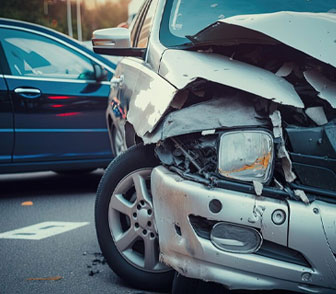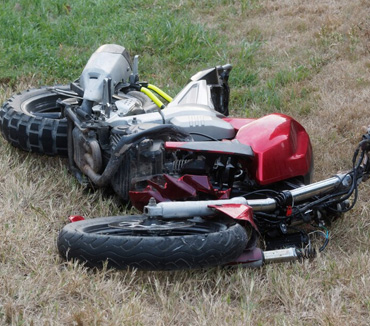Civil Lawsuit – The Civil Litigation Process Explained
A civil lawsuit, also known as civil litigation, is one with a non-criminal status. Simply put, civil litigation is a legal dispute between two or more parties that typically seeks economic damages or specific performance, rather than criminal sanctions.
Civil claims arise out of disputes between two or more legal entities such as people, companies, governments, etc. One of the most common types of cases heard in civil court is personal injury cases. Other civil cases include breach of contract or complaints against a municipality itself.
A lawsuit can be a confusing and intimidating time. But understanding the civil litigation process and procedures is essential in moving forward with a case. Whether you are a plaintiff (the person bringing the lawsuit) or a defendant (the person being sued), a broad overview of the procedure in a lawsuit may help lower the confusion.
Continue reading to learn the necessary steps in these types of cases.
What Is Civil Litigation
Civil litigation is a term used to refer to a specific type of litigation where the dispute is between private parties and the remedies sought in general are monetary damages or specific performance. This is different from criminal litigation since criminal litigation is litigation brought by the state against an individual and typically results in jail or prison time.
The term “litigation” refers to the entire journey a person or company goes through in investigating a potential cause of action, filing a lawsuit, going through legal proceedings, getting a judgment, appealing, and finally enforcing the judgment.
Now, to say “civil” litigation, the idea is to involve individuals, groups of people, people and businesses, or other entities. A civil lawsuit can range from a small claim, such as a minor car accident, to major multidistrict litigation over a dangerous medication that involves thousands of people.
Determining Jurisdiction
Jurisdiction of courts is among the first things students learn in law school, and yet questions continuously arise over whether a court has the power to decide certain cases or enter judgments against a person or a business. In its most basic form, jurisdiction is the legal authority granted to a court to hear cases and make decisions and judgments. A court cannot rule on a case unless it has jurisdiction over the subject matter and the persons involved, making determining jurisdiction an important aspect of civil lawsuits.
Jurisdiction must usually be based one of the following:
- Personal jurisdiction. The person who is the defendant is present in the state or was present when the accident or civil wrong occurred.
- In rem jurisdiction. The property in dispute, such as a home, is present in the state
- Subject matter jurisdiction. Here, the courts need to decide if the subject in dispute has a reasonable connection to the state. For example, in a car accident, if the negligent driver lives in Arizona and the accident victim lives in California, then California may have subject matter jurisdiction if the accident happened on a California road.
What are the Steps in a Civil Lawsuit?
Civil litigation goes through specific steps – or proceedings. Your first step should be to consult with potential representatives, specifically an experienced personal injury attorney, for legal advice about your potential lawsuit. An experienced attorney will let you know whether or not you have a valid case so that you do not waste time and resources filing a case that is unlikely to be successful or make it to trial.
You should also be sure that your case falls within your state’s statute of limitations. Ask a legal representative to be sure that you are filing the case within the appropriate time frame.
After an initial consultation, your civil lawsuit case will follow four common steps:
- Pleadings
- Discovery
- Trial
- Appeal
1. Pleadings – Complaint and Answer
Pleadings are the initial step in the civil lawsuit. Each side, or party, will file paperwork in the relevant court to explain their side of the story. The person bringing on the lawsuit, or plaintiff, will file a complaint. The person being alleged of wrongdoing, or defendant, will file an answer.
What is a Complaint?
Litigation begins when the plaintiff files a complaint with the court and formally delivers a copy to the defendant. The complaint describes what the defendant did (or failed to do) that caused harm to the plaintiff and the legal basis for holding the defendant responsible for that harm.
What is an Answer?
The defendant is given a specific amount of time to file an answer to the complaint. The answer provides the defendant’s side of the dispute. The defendant may also file counter-claims against the plaintiff, alleging that the plaintiff has harmed the defendant and should be held liable for that harm. The defendant has a limited amount of time to file an answer. The defendant can file a counterclaim if they so choose. The counterclaim(s) is an allegation(s) against the plaintiff, outlining the ways in which the plaintiff caused harm to the defendant. The counter-claim also establishes a legal basis for holding the plaintiff responsible for the plaintiff’s alleged actions. The plaintiff will sometimes file a response to the answer or counterclaim in the form of a reply.
2. Pretrial Preparations – Discovery and Motions
Thorough case preparation is critical to any successful litigation. Discovery is the method by which parties gather relevant information from each other or from third parties. Research of the law, document review and organization, and witness interviews help clients and their lawyers assess the merits of claims and defenses. The extent to which these and other steps are needed is determined by the issues of the case.
Discovery is usually the longest part of the case. It begins soon after a lawsuit is filed and often does not stop until shortly before trial. Each party will obtain evidence through demands for production of documents, depositions of parties and witnesses, written interrogatories (questions and answers written under oath), written requests for admissions of fact, an examination of the scene, and the petitions and motions employed to enforce discovery rights.
Parties may also use expert witnesses to gain knowledge about the case during discovery. Expert witnesses are brought in to validate arguments and testify on behalf of a party’s claim, and typically are doctors, scientists, or people with proven specialized knowledge on the situation at hand.
Expert Witnesses: Often a claim or defense requires support from expert witnesses to explain technical information or validate an argument. One or more experts might be needed to testify about the connection between the defendant’s conduct and the loss suffered by the plaintiff, or the existence and amount of the plaintiff’s damages. Expert witnesses work closely with a party’s representatives and attorneys to prepare the party’s case.
Motions: Before the trial begins, either during the discovery process or shortly after, parties may use motions to ask the court to rule or act. The motion can be a request to amend or dismiss part of the case, question the legal basis or languages used by the other party, or a request for clarification of certain issues in the lawsuit.
Timing: The duration of a lawsuit depends on the issues of the case, the amount of discovery to be conducted, and court scheduling and availability. The parties, guided by the rules of court, usually decide the timing of discovery. Trial dates are set by the court. Timing and scheduling differ between state and federal courts.
3. Trial and Verdict
The trial process starts by both parties filing a brief describing their argument and the evidence they will present. During the trial, lawyers present the case to either a jury or a judge, starting with an opening statement outlining each party’s argument–beginning with the plaintiff. The parties present their evidence and call witnesses to the stand if there are any. After the case has been presented in full, the plaintiff and defendant will make closing statements. The jury then deliberates and reaches a decision or verdict.
After the verdict is made, a party can choose to challenge the verdict. These challenges are more common during jury trials because potential errors and disregard of the law or legal definitions occur more often by juries. A party can file a motion for judgment notwithstanding the verdict, asking the judge to make a decision without consideration to the jury’s verdict. A party can also file a motion for a new trial.
4. Appeal
If a party does not agree with the verdict decided during the trial, they can appeal and present their case to an appellate court. This court will review the lawsuit and look for discrepancies. They will then either affirm the verdict or find an error. If an error is found, the appellate court may reverse the verdict or order a new trial.
The parties present their arguments in briefs, which are submitted to the appellate court along with the record of evidence from the trial court. The appellate court usually reviews a case for legal error only. Except under unusual circumstances, the appellate court will not review factual evidence or override a jury’s findings of fact. The appellate court announces its decision in a document called an opinion. The appellate court will affirm the verdict if it finds that there was no error in the trial court proceeding. However, if there was an error, the appellate court can reverse the verdict or order the trial court to conduct a new trial. An appeal can extend the litigation process by a year or more.
Alternatives to trial
Alternatives to trial usually save time and expense, but they may not result in a final resolution of the dispute. The desirability of these alternatives should be evaluated early to allow their timely implementation.
- Settlement
A settlement conference is a meeting before a trial in which the parties involved in a lawsuit meet to discuss the dispute. The purpose of the meeting is to determine if they can settle their dispute before going through with the trial. If it is decided at the settlement conference that a judgment will be entered, the parties involved in the lawsuit are obligated to abide by it and cannot appeal.
- Mediation
The parties may be able to negotiate a settlement without outside help, but it is common to involve a neutral third party, known as a “mediator.” The mediator’s job is to assist the parties’ settlement efforts. Mediation can be used for any kind of dispute; there is no need to wait until a dispute results in a lawsuit and is sent to mediation by a judge. Pre-lawsuit mediation is becoming more widely accepted as a sensible way of resolving disputes before they turn into litigation. Besides being confidential and non-binding, mediation is relatively quick and inexpensive compared to litigating a dispute.
- Arbitration
One of the best alternatives to litigation is arbitration. It essentially provides the same benefits of traditional litigation without heading into an actual courtroom. It’s a reasonably priced alternative to litigation that uses evidence, witnesses, and arguments to get to the bottom of the dispute. Heading into court can be a time-consuming and costly endeavor, which is why you should always keep arbitration in mind when you are dealing with a legal dispute.
Should You Speak with an Attorney?
Our legal team at Duque Law Group is comprised of award-winning and nationally recognized trial lawyers who collaborate with nurses, doctors and medical experts regularly. Though we understand the nature of injuries, we are not physicians, and always encourage victims to seek treatment as soon after an accident as possible, and to follow up and heed their doctors’ advice.
Call us now at 1-877-241-9554 to learn more about your options. A free consultation is just a phone call away.
Request A
Free Consultation
Fields Marked With An ” *” Are Required











